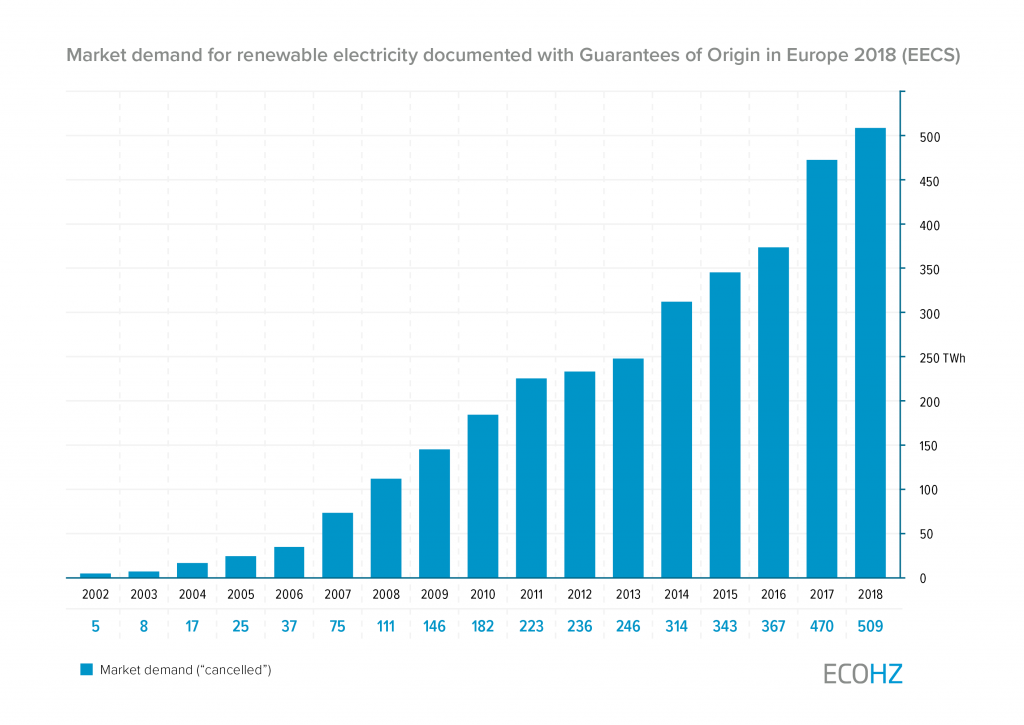Renewable electricity over 500 TWh in Europe
Renewable electricity demand surpasses 500 TWh in Europe «For the first time renewable electricity demand in Europe surpasses 500 TWh, or half a billion Guarantees of Origin (GOs)», said Tom Lindberg, Managing Director in ECOHZ, commenting on 2018 statistics from the Association of Issuing Bodies (AIB). This high demand represents an impressive 8% increase from […]

Renewable electricity demand surpasses 500 TWh in Europe
«For the first time renewable electricity demand in Europe surpasses 500 TWh, or half a billion Guarantees of Origin (GOs)», said Tom Lindberg, Managing Director in ECOHZ, commenting on 2018 statistics from the Association of Issuing Bodies (AIB).
This high demand represents an impressive 8% increase from 470 TWh in 2017. The demand for renewable electricity keeps on showing robust growth in Europe’s biggest markets. The Netherlands, France, Switzerland and Italy show record high demand in 2018. The French market demand increased from 21 TWh to 33 TWh in 2018, while Italy saw record demand of 45 TWh compared to 41 TWh in 2017. Although there are not the final numbers for Germany yet, they are in line to exceed 100 TWh for the first time.
TALKING ABOUT RENEWABLE: BOSCH DIESEL FUEL
Record price levels
Wholesale prices for GOs averaged around 1.30 €/MWh in 2018, while Nordic hydro GOs traded as high as 2.29 €/MWh. This indicates that the market is willing to pay higher prices. Even though demand did not grow quite as aggressively as in 2017.
With demand for renewable power now exceeding 500 TWh, and forward prices set at around 1.30 €/MWh, the annual value of the market exceeds 650 million euro. If growth trends continue predictions say that this will be a billion euro market in a few years.

The attractive power of wind power
Although hydropower is still the greatest source of renewable electricity, preferences are gradually shifting towards alternative renewable sources. Wind power is starting to become the “technology of choice”. Predictions say that these shifts will likely increase during the next years.
These changes in demand may not only reflect changes in customer preferences, but also reflect changes in market availability for different technologies.
BORGWARNER COUNTS ON WASTE HEAT TO PRODUCE ELECTRICITY
The forces behind the demand
Households, organisations and businesses all contribute to market growth. But the corporate sector is the main driver because more corporations see sustainability as necessary for future competitiveness. Several initiatives exist to support corporate sustainability ambitions. Two notable initiatives are WeMeanBusiness and RE100.
The RE100 initiative now has 161 corporate members that have all publicly pledged to consume 100% renewable energy. Also, the EU recently approved a new Renewable Energy Directive (REDII). Thus strengthening the GO system by further embedding it in European legislation.










